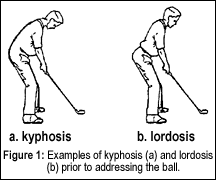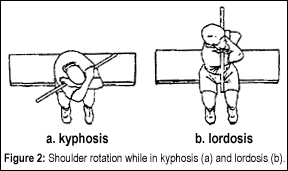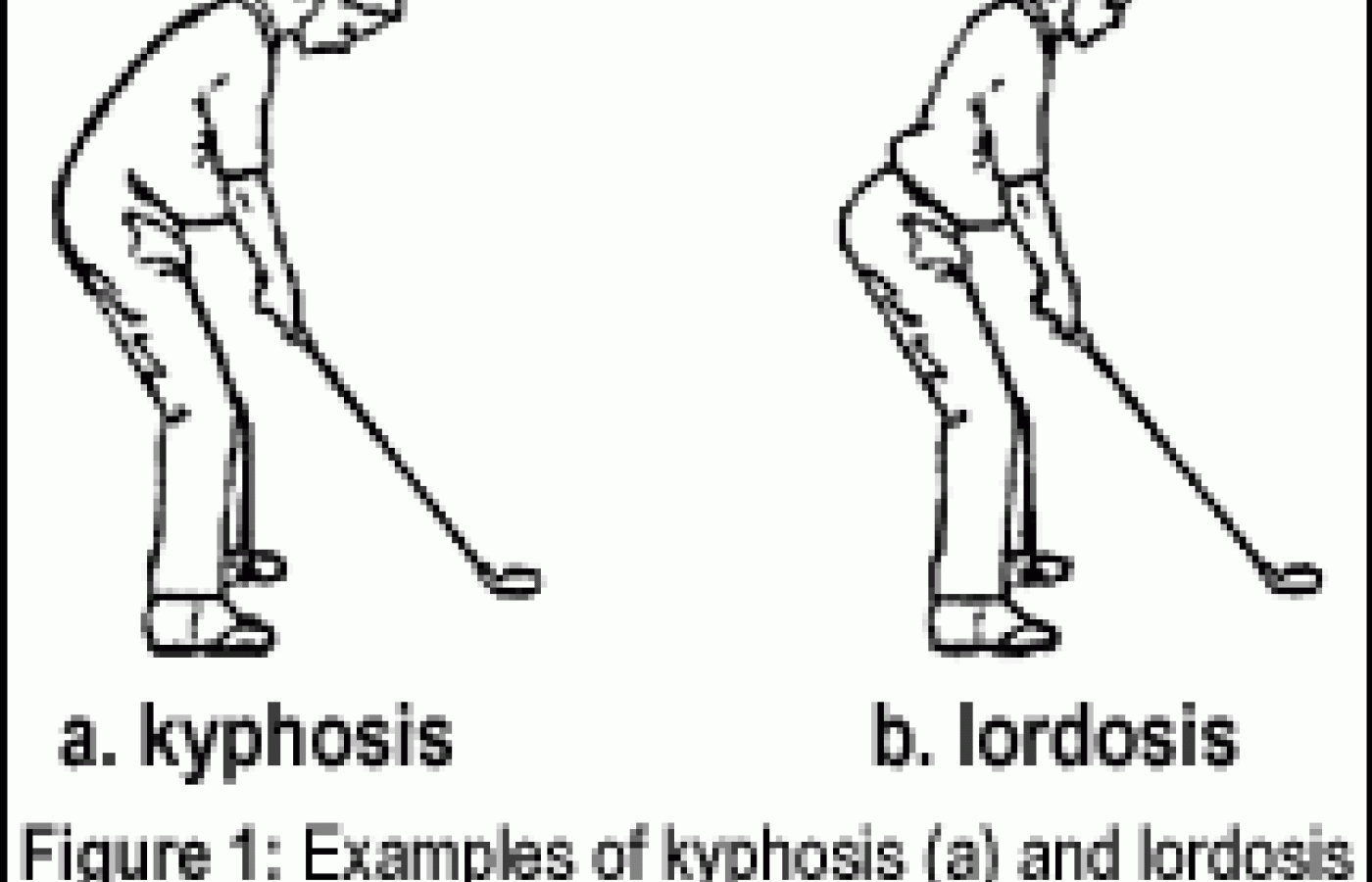MRI is currently the gold standard for identifying radicular pathology, but unfortunately, it requires preauthorization, which isn’t easy to obtain. Physical tests are what most practitioners depend on – despite the marginal reliability of the tests. The information in this article brings history and observation to the forefront of radicular diagnostics. Each factor listed can significantly increase the clinician’s ability to diagnose radiculopathies.
Chiropractic and Golf
This is the first in a 12-part series concentrating on the assessment and treatment of golfers and golf-specific injuries. Each installment will focus on a different physical problem, its causes and treatment. In the U.S. there are almost 30 million golfers, and every one of them a potential chiropractic patient. Because of the unilateral movement in the golf swing, virtually every golfer at some point experiences some form of injury or pain: some chronic, and others acute.
There are three fundamental causes of golf injuries: poor posture, lack of flexibility and poor swing mechanics. The root cause of poor mechanics is often a result of a physical restriction or mechanical dysfunction, which may be alleviated through chiropractic procedures. Lack of flexibility can also be addressed by treatment and a prescribed stretching program specifically designed around each patient's restrictions. Obviously, chiropractic care is ideally suited to deal with poor posture.
On the golf course, physical exertion is intermittent. A golfer will attempt approximately 50-70 violent swings every five minutes or so while playing 18 holes. The average amateur will swing his club at 80-100 miles per hour. On the driving range, the pounding is rapid and relentless. Your patient will flail away at golf balls 60-100 times in a half hour, and often continue the assault for hours on end.
Chiropractors are the perfect choice to evaluate, educate, treat, condition and train golfers. In The Golf Biomechanics Manual, Paul Chek writes: "Amateur golfers achieve approximately 90 percent of their peak muscular activity when driving a golf ball. This is the same intensity as picking up a weight that can only be lifted four times before total fatigue. This level of exertion and muscular activation equates golf with such sports as football, hockey and martial arts. The difference is that other athletes outside of golf include conditioning as an integral part of their preparation before play." Very few golfers attempt any conditioning at all. Is it any wonder there are so many golf related injuries?
The golf swing requires the spine to rotate, bend laterally and extend. This requires flexibility that is golf-specific. You will learn a golf-specific examination procedure to identify potential problem areas for your patient. Once identified, you will learn the appropriate correction sequences. Chiropractors have extensive training in the biomechanics of human movement. Whether you play golf or not, this series will assist you in identifying the cause of a patient complaint or condition, then treat it. You will learn appropriate clinical examination techniques and essential treatment protocol.
This is neuromuscular re-education and fitness and conditioning for golf, not a program of golf instruction. You are not competing with the local PGA teaching professional, but you will learn to work along with the golf pro to the benefit of your patients. It is leading-edge management for golf-related pain and injury. You will be able to position yourself as an expert in the diagnosis and treatment of golf injuries. The result is that the PGA teaching professionals will seek your help with their students who have pain stemming from postural dysfunction and poor flexibility.
It is not your job to teach the golf swing, but to identify the biomechanical movement responsible for a repetitive strain injury. It will be up to you to help your patients "re-route" their swing path to prevent further injury.
Segment One - Posture
Sound golf posture is both static and dynamic. Static posture is responsible for your patients' overall alignment at address before the swing begins. The ability to maintain posture during the golf swing is a measure of a golfer's dynamic postural strength and fitness.
The secondary spinal curves relate to your patients' ability to rotate for a powerful golf swing. We have been taught that the position of the structure dictates its function. Good golf posture requires the secondary curves in the cervical and lumbar spine to be in lordosis. The secondary spinal curves provide mechanical leverage for strength and facilitate the patient's ability to rotate. Poor golf posture with a collapse of the secondary curves restricts spinal rotation. This will cause golfers to overswing, leading to soft tissue injuries.
Clinical Examination

Let the patient sit at the end of your adjusting table, arms folded across the chest. Have the patient slump slightly forward into spinal kyphosis, chin down, and try to rotate his shoulders bilaterally; then have the patient sit up straight and "roll-in" the secondary spinal curves with the chin up. Once again, have the patient rotate the shoulders left and right. Comparative measurement will show an increase in the patient's ability to rotate while in lordosis. Remember, the secondary curves are levers that provide mechanical advantage and strength for movement of the spinal column.

Secondary Curve Correction Protocol
Cervical: While in the static back position, have the patient place a four-inch rolled towel at the base of the neck. The towel will act as a fulcrum against the muscular resistance of the cervical spine. The weight of the head will provide the load necessary for traction. Start with 1-3 minutes of traction depending on patient toleranc, and add time every other day until the patient can tolerate 20 minutes with no discomfort.
A lasting change of cervical lordosis requires lengthening the anterior longitudinal ligament. A six-inch foam cervical fulcrum is necessary to lift the head an inch or two off the floor. Gravity will do the work and over time create the necessary ligament creep. Start with one to three minutes of fulcrum traction and add time every other day until the patient can tolerate 20 minutes with no discomfort. Lasting correction of cervical lordosis can take 6-18 months of daily application.
Lumbar: While supine and knees flexed with feet flat on the floor, place a two-inch rolled towel at L3. Begin with one to three minutes of traction and increase the duration of time every other day until the patient can tolerate 20 minutes comfortably. Then, graduate the patient to a four-inch rolled towel. Start with one to three minutes and add time every other day until the patient can last 20 minutes with no discomfort.

Conclusion
To hit the ball a great distance, a golfer must to be able to rotate into and maintain a wide arc through the swing. Functional restoration of the secondary curves in the cervical and lumbar spine then becomes an essential component to your patients' fitness regime.
The next article in this series: "Golf Posture - Diagnosis and Treatment of Frontal Plane Dysfunction."
Jeffry Blanchard,DC
Encinitas, California
Leonard Finkel
Vista, California
www.golfandlife.com
glfgd@aol.com
About the authors: Jeffry Blanchard,DC, has been in private practice in California since 1980. He is a former associate professor at Life and Northern California College of Chiropractic, and a postgraduate instructor with Pettibon and Chiropractic Bio-Physics. He is a diplomate of the College of Thermography and is certified in MUA, QME, and as a disability evaluator.
Dr. Blanchard became a golf professional in 1988. He was a qualifier at the 2001 Tucson Open, Phoenix Open, San Diego Open, L.A. Open, and U.S. Open.
Leonard Finkel is the author of The Secrets to the Game of Golf & Life. He writes for and appears on the nationally syndicated TV show "Links Illustrated."



